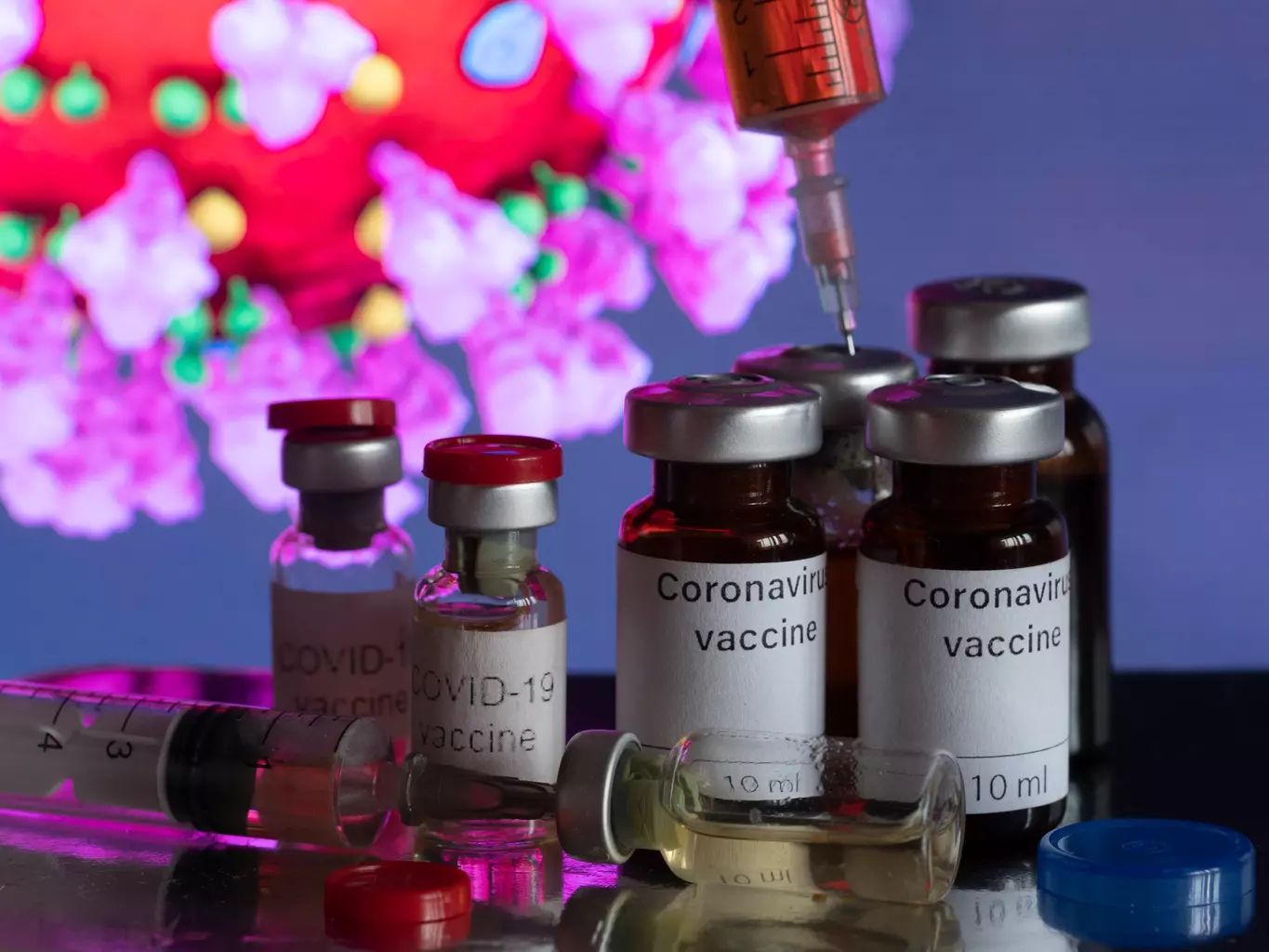Last Updated on November 26, 2025 by Bilal Hasdemir

At Liv Hospital, we focus on carotid artery treatment without surgery. This is to stop strokes and slow down disease growth. Carotid artery disease happens when plaque builds up, raising stroke risk.
We have many proven ways to manage carotid artery disease and stop strokes. Our team gives personalized care and support, helping patients explore carotid artery treatment without surgery and find the most effective options for their condition.
Key Takeaways
- Non-surgical carotid artery treatment options are available and effective.
- Personalized care and support are key to managing carotid artery disease.
- Evidence-based treatments can prevent stroke and slow disease growth.
- Liv Hospital’s expertise and patient-focused care offer new hope.
- Advanced carotid artery blocked treatment alternatives are available.
Understanding Carotid Artery Disease and Blockage

It’s important to know what causes carotid artery disease to manage and prevent serious problems. Carotid artery stenosis, where the arteries narrow, can lead to stroke and heart issues.
What Causes Carotid Artery Stenosis
Carotid artery stenosis mainly happens because of plaque buildup. This plaque is made of cholesterol, fat, and other stuff. The reasons for this buildup are complex, involving genes, lifestyle, and environment.
How Plaque Builds Up in the Carotid Arteries
Plaque buildup in the carotid arteries takes years. It starts with LDL cholesterol sticking to the artery walls. As more LDL builds up, it gets oxidized, causing inflammation and attracting white blood cells.
These white blood cells, now foam cells, help the plaque grow. Over time, the plaque can become unstable. If it ruptures, it can cause a blood clot. This clot can block the artery or travel to the brain, leading to a stroke.
Risk Factors You Can and Cannot Control
Many factors contribute to carotid artery stenosis. Some can be controlled, while others can’t.
| Risk Factor | Controllable | Impact |
| Hypertension | Yes | High blood pressure can damage the inner lining of the arteries, making them more susceptible to plaque buildup. |
| Smoking | Yes | Smoking damages the cardiovascular system and increases the risk of plaque buildup. |
| High LDL Cholesterol | Yes | Elevated levels of LDL cholesterol contribute to plaque formation. |
| Diabetes | Yes | Diabetes increases the risk of cardiovascular disease, including carotid artery stenosis. |
| Age | No | The risk of carotid artery disease increases with age. |
| Family History | No | A family history of cardiovascular disease can increase an individual’s risk. |
Knowing these risk factors and managing them can lower the chance of carotid artery stenosis and its complications.
Recognizing Symptoms of Carotid Artery Blockage

Knowing the warning signs of carotid artery disease can save lives. This condition often doesn’t show symptoms until it’s severe. This can lead to a stroke or a transient ischemic attack (TIA). It’s important to spot these symptoms early for quick medical help.
Warning Signs That Shouldn’t Be Ignored
Symptoms of carotid artery blockage include sudden weakness or numbness in the face or limbs. This usually happens on one side of the body. Other signs are trouble speaking or understanding speech, sudden vision changes in one or both eyes, and severe headaches without a cause. If you or someone you know has these symptoms, get medical help right away.
Common symptoms to watch out for:
- Sudden weakness or numbness
- Difficulty with speech
- Vision changes
- Severe headache
Silent Progression: When There Are No Symptoms
Carotid artery disease often moves quietly, without symptoms, until a stroke happens. This is why regular check-ups and screenings are key. They’re important for those with risk factors like high blood pressure, diabetes, or a family history of heart disease.
Regular monitoring can help catch carotid artery disease early. This can prevent serious outcomes.
Diagnostic Tests Your Doctor May Order
Doctors use several tests to check for carotid artery blockage. These include:
| Diagnostic Test | Description | Benefits |
| Carotid Ultrasound | A non-invasive test using sound waves to create images of the carotid arteries. | Quick, painless, and effective for assessing blockage. |
| CT Angiography | A test that uses X-rays and contrast dye to visualize the carotid arteries. | Provides detailed images of the arteries and any blockages. |
| MRI | A non-invasive imaging test that uses magnetic fields to create detailed images. | Offers a full view of the brain and carotid arteries. |
These tests help find out how bad the blockage is. They also help decide the best treatment.
Carotid Artery Treatment Without Surgery: An Overview
Patients with carotid artery stenosis now have many non-surgical treatment options. These alternatives can greatly improve their health. We will look at these options, their benefits, and when they are best used.
Benefits of Non-Surgical Approaches
Non-surgical treatments for carotid artery disease have many advantages. They lower the risk of surgery complications, have shorter recovery times, and allow for ongoing management. Key benefits include:
- Minimized risk of stroke and other cardiovascular events
- Less invasive, reducing the risk of surgical complications
- Flexibility in treatment planning and adjustments as needed
By avoiding surgery, patients also lower their risk of surgical problems. These can include infection, bleeding, and reactions to anesthesia.
When Conservative Treatment Is Recommended
Conservative or non-surgical treatment is often recommended for mild to moderate carotid artery stenosis. It’s also for those who are asymptomatic. The decision to pursue non-surgical treatment is based on a thorough assessment of the patient’s health, disease severity, and other risk factors.
We look at several factors to decide the best treatment. These include the degree of stenosis, symptoms, and medical history.
The Concept of Best Medical Treatment (BMT)
Best Medical Treatment (BMT) is a non-surgical approach to managing carotid artery disease. It combines lifestyle changes and medications to stabilize plaque, reduce stroke risk, and improve heart health.
BMT includes:
- Antiplatelet therapy to prevent blood clots
- Cholesterol-lowering medications to stabilize plaque
- Blood pressure management to reduce strain on the arteries
By following BMT, patients can lower their stroke and heart event risks. This improves their quality of life and long-term health.
Treatment #1: Antiplatelet Therapy
Antiplatelet therapy is key in fighting carotid artery disease and preventing strokes. It stops platelets in the blood from sticking together to form clots.
How Antiplatelet Medications Prevent Stroke
These medications stop platelets from clumping, which lowers the chance of clotting. This is vital in carotid artery disease. Plaque buildup can cause blood clots that lead to strokes.
By stopping platelet clumping, these drugs cut down the risk of ischemic stroke. This type of stroke happens when a blood clot blocks brain blood flow.
Aspirin and Other Common Medications
Aspirin is a top choice for antiplatelet meds. It blocks the making of thromboxane A2, a chemical that makes platelets stick together.
Other drugs like clopidogrel, prasugrel, and ticagrelor are also used. They might be taken alone or with aspirin, based on the patient’s health and risk.
| Medication | Mechanism of Action | Common Side Effects |
| Aspirin | Inhibits thromboxane A2 production | Gastrointestinal bleeding, allergic reactions |
| Clopidogrel | Inhibits ADP receptor | Bleeding, thrombotic thrombocytopenic purpura |
| Prasugrel | Inhibits ADP receptor | Bleeding, allergic reactions |
Potential Side Effects and Management
Antiplatelet therapy is usually safe but can have side effects. The biggest risk is bleeding, as these drugs make blood less likely to clot.
To handle this risk, patients need regular check-ups with their doctors. Doctors will check for bleeding risks and adjust treatment plans as needed.
Treatment #2: Cholesterol-Lowering Medications
Cholesterol-lowering medications play a big role in treating carotid artery disease. They help lower LDL cholesterol and stabilize plaques. These steps are key to managing the disease and preventing heart problems.
Statins: The Cornerstone of Plaque Stabilization
Statins are the main treatment for lowering LDL cholesterol and stabilizing plaques in carotid artery disease. They block the enzyme HMG-CoA reductase. This enzyme is important for cholesterol production in the liver.
- Benefits: Statins not only lower LDL cholesterol but also have anti-inflammatory properties. These properties help stabilize plaques, making them less likely to rupture.
- Common Statins: Atorvastatin, simvastatin, and rosuvastatin are commonly used statins for managing carotid artery disease.
PCSK9 Inhibitors and Other Advanced Options
For those needing more LDL-lowering than statins can offer, PCSK9 inhibitors are a good option. These medications target the PCSK9 protein. This protein is involved in the breakdown of LDL receptors in the liver.
Some key points about PCSK9 inhibitors include:
- They significantly reduce LDL cholesterol levels when used alongside statins.
- They have been shown to reduce the risk of major cardiovascular events in high-risk patients.
- Examples include alirocumab and evolocumab.
Can Carotid Stenosis Be Reversed with Medication?
While medications can’t completely reverse carotid stenosis, they can stabilize plaques and prevent further progression. In some cases, lowering LDL cholesterol can lead to a reduction in atherosclerotic lesions.
It’s essential to note that the effectiveness of these medications can vary from patient to patient. Regular monitoring is necessary to adjust treatment plans.
Understanding the role of cholesterol-lowering medications in managing carotid artery disease is key. Patients can work with their healthcare providers to develop a personalized treatment plan. This plan helps minimize the risk of stroke and other cardiovascular events.
Treatment #3: Blood Pressure Management
For those with carotid artery disease, keeping blood pressure in check is vital. It helps prevent more serious problems. Managing blood pressure well is a key part of treating carotid disease. It greatly lowers the chance of stroke and heart issues.
Optimal Blood Pressure Targets for Carotid Disease
Studies say keeping blood pressure under 130/80 mmHg is best for carotid disease patients. But, the right goal might differ based on age, other health issues, and how severe the stenosis is.
A study in the Journal of the American Heart Association stressed the need for personalized blood pressure goals. It suggests these goals should be set based on a detailed look at each patient’s health.
| Blood Pressure Category | Systolic BP (mmHg) | Diastolic BP (mmHg) |
| Normal | <120 | <80 |
| Elevated | 120-129 | <80 |
| Stage 1 Hypertension | 130-139 | 80-89 |
| Stage 2 Hypertension | ≥140 | ≥90 |
First-Line and Combination Medication Approaches
Choosing the right blood pressure medicine for carotid disease patients depends on their health and risk. Common first choices are ACE inhibitors, ARBs, and diuretics.
Combination therapy is often needed to control blood pressure well. Mixing different medicines can work better and be easier to take.
“The use of combination therapy in hypertension management allows for lower doses of individual drugs, potentially reducing side effects and improving patient adherence.” –
Journal of Clinical Hypertension
Home Monitoring Strategies
Checking blood pressure at home is key for carotid disease patients. It helps spot changes early and helps manage high blood pressure better.
Patients need to use good, automated blood pressure monitors. They should take readings often. This helps doctors make better treatment plans and adjust medicines as needed.
By focusing on blood pressure management, we can greatly lower the risk of stroke and heart problems in carotid disease patients. A complete plan that includes lifestyle changes, medicine, and regular checks is essential for managing the disease well.
Treatment #4: Comprehensive Lifestyle Modifications
Changing your lifestyle can help treat carotid artery disease without surgery. Making big changes in your daily habits can slow down the disease and boost your health.
Smoking Cessation: The Single Most Important Change
Stopping smoking is key to better heart health. Programs, counseling, and meds can help you quit. Nicotine replacement therapy (NRT) and drugs like bupropion and varenicline help with cravings.
The Mediterranean Diet for Carotid Health
Eating like you’re in the Mediterranean can fight inflammation and improve your heart. This diet is full of fruits, veggies, whole grains, and healthy fats. It includes lots of olive oil, fish, and fiber.
What makes up the Mediterranean diet?
- High intake of fruits and vegetables
- Use of olive oil as the primary source of fat
- Regular consumption of fish and poultry
- Low consumption of red meat and processed foods
Exercise Prescriptions That Work
Staying active is key for heart health and managing carotid disease. Aerobic exercises like walking, cycling, and swimming are great. Your exercise plan should fit your fitness level and health, aiming for 150 minutes of moderate activity weekly.
Stress Reduction Techniques with Clinical Benefits
Too much stress is bad for your heart. Mindfulness meditation, yoga, and deep breathing can help. These activities not only calm your mind but also lower blood pressure and improve heart health.
By making these lifestyle changes, people with carotid artery disease can manage their condition better. This improves their life quality.
Treatment #5: Diabetes and Blood Sugar Control
Managing diabetes is key to treating carotid artery disease. It greatly affects how well patients do. We know diabetes increases the risk of carotid artery disease. So, keeping blood sugar in check is vital to lowering heart disease risk.
The Connection Between Diabetes and Carotid Disease
Diabetes speeds up atherosclerosis, the main cause of carotid artery stenosis. High blood sugar damages blood vessel linings, making them more likely to block. Also, diabetes often comes with other heart disease risks like high blood pressure and bad cholesterol levels.
Medication Approaches for Diabetic Patients
Dealing with diabetes in carotid artery disease patients needs a mix of lifestyle changes and medicines. Metformin is often the first choice for type 2 diabetes because it lowers blood sugar well without causing low blood sugar. Other medicines, like SGLT2 inhibitors and GLP-1 receptor agonists, also help the heart and might be used based on the patient’s needs.
Monitoring and Maintaining Optimal Glucose Levels
It’s important to check blood sugar levels often in diabetic patients with carotid artery disease. This can be done with self-monitoring blood glucose (SMBG) and continuous glucose monitoring (CGM) systems. Keeping blood sugar levels in the right range, as the American Diabetes Association suggests, can lower heart disease risks.
By managing diabetes well, patients with carotid artery disease can lower their stroke and heart disease risks. Our healthcare team helps patients create a diabetes plan that fits their needs and health goals.
Treatment #6: Minimally Invasive Carotid Artery Stenting
Carotid artery stenting is a new way to treat blocked arteries. It’s for people who can’t have traditional surgery. This method uses a stent to keep the artery open, lowering stroke risk. We’ll look at how it’s different from surgery, who it’s best for, and how long it takes to recover.
Differences from Surgical Endarterectomy
Carotid artery stenting is different from surgery in a few ways. It doesn’t remove plaque like surgery does. Instead, it uses a minimally invasive method to place a stent. This is good for those at high risk for surgery or who have had neck surgeries before.
A study in the Journal of the American College of Cardiology found stenting lowers heart attack risk. But, it might slightly increase stroke risk in the first 30 days.
Ideal Candidates for Carotid Stenting
Not everyone is right for carotid artery stenting. The best candidates are those with:
- High-grade carotid stenosis patients who are symptomatic
- High risk for surgical complications due to medical comorbidities
- Previous neck irradiation or surgery
- Severe contralateral carotid occlusion
Our team looks at each patient’s health, stenosis level, and symptoms. We decide who’s best for stenting.
Recovery Timeline and Success Rates
Recovery from carotid artery stenting is usually quicker than surgery. Most can get back to normal in a few days. Studies show stenting can be as effective as surgery for the right patients. It greatly reduces stroke and heart event risks over time.
“Carotid artery stenting is a valuable treatment option for patients with carotid stenosis, particularly those at high risk for surgical complications. With careful patient selection and meticulous technique, stenting can achieve outcomes comparable to surgical endarterectomy.”
Interventional Cardiologist
In conclusion, carotid artery stenting is a big step forward in treating blocked arteries. It’s a minimally invasive alternative to surgery with good results. Always talk to a doctor to find the best treatment for you.
Treatment #7: Transcarotid Arterial Revascularization (TCAR)
For those with carotid artery stenosis, Transcarotid Arterial Revascularization (TCAR) is a new treatment. It’s a direct way to access the carotid artery through the neck. This might be safer for some patients.
The TCAR Procedure Explained
The TCAR procedure starts with a small neck incision. This lets doctors directly access the carotid artery. They then place a stent to improve blood flow and lower stroke risk.
This method is different from traditional carotid stenting. TCAR is done with direct vision. This might lower the risk of complications.
Advantages Over Traditional Stenting
TCAR has some key benefits over traditional stenting. These include:
- Lower stroke risk during the procedure due to direct access and vision
- Potential for fewer complications from navigating the aortic arch
- It may be better for patients with complex aortic arch anatomy
These benefits make TCAR a good choice for those at high risk from traditional stenting or surgery.
Recovery and Long-Term Outcomes
Recovery from TCAR is usually quick. Most patients can get back to normal in a few days. The long-term results of TCAR look promising.
Studies show the stent stays open well, and restenosis is rare.
| Outcome Measure | TCAR | Traditional Stenting |
| Procedural Stroke Risk | Lower | Higher |
| Recovery Time | Shorter | Variable |
| Long-term Patency | High | High |
Whether TCAR is right for you depends on many factors. These include your anatomy, health, and risk factors. Always talk to a vascular specialist to find the best treatment.
Managing Heterogeneous Plaque: A Special Consideration
Understanding heterogeneous plaque is key to effective treatment. This type of plaque is mixed, making it hard to manage carotid artery disease.
Different Types of Carotid Plaque
Carotid plaque can be divided into types based on its makeup. The main types are:
- Heterogeneous Plaque: Mixed, with elements like lipid-rich areas, fibrous tissue, and calcification.
- Homogeneous Plaque: More uniform, mainly made of fibrous tissue.
Knowing the plaque type is vital for assessing risk and choosing the right treatment.
Why Plaque Composition Matters
The makeup of carotid plaque is key to stroke risk. Heterogeneous plaques are high-risk because they can rupture easily.
Plaque vulnerability isn’t just about size. It’s also about its makeup and characteristics.
Tailored Treatment Approaches for Complex Plaques
Dealing with heterogeneous plaque needs a custom plan. This plan considers the plaque’s specifics and the patient’s health.
| Treatment Approach | Description | Benefits |
| Antiplatelet Therapy | Medications that prevent platelets from aggregating | Reduces the risk of stroke by preventing clot formation |
| Statins | Cholesterol-lowering medications | Stabilizes plaque by reducing lipid content |
| Carotid Artery Stenting | Minimally invasive procedure to place a stent | Restores blood flow and reduces stroke risk |
By grasping the makeup of heterogeneous plaque, we can craft better, personalized treatments for carotid artery disease.
Conclusion: Creating Your Personalized Carotid Health Plan
Managing carotid artery disease needs a full plan. This includes medical treatments, lifestyle changes, and sometimes procedures. We’ve looked at treatments like antiplatelet therapy and cholesterol-lowering drugs. These help manage blood pressure and lifestyle.
With this knowledge, you can make a personalized carotid health plan with your doctor. This plan fits your specific needs.
A personalized carotid health plan is keytor managing the disease. It considers your health history, current status, and lifestyle. Combining treatments with healthy habits like a good diet and exercise can lower stroke risk and boost heart health.
We suggest talking to your doctor about your options. Together, you can make a detailed plan for your needs. This way, you can manage your carotid artery disease better and live a healthier life.
FAQ
Can carotid stenosis be reversed without surgery?
Carotid stenosis can’t always be completely reversed. But non-surgical treatments like lifestyle changes and medicines can help. They can manage the condition, stabilize plaque, and slow disease progression.
What are the treatment options for blocked carotid arteries?
For blocked carotid arteries, treatments include Best Medical Treatment (BMT). This includes antiplatelet therapy, cholesterol-lowering drugs, blood pressure control, and lifestyle changes. Sometimes, procedures like carotid artery stenting or Transcarotid Arterial Revascularization (TCAR) are recommended.
How does antiplatelet therapy help prevent stroke in carotid artery disease?
Antiplatelet therapy stops platelets from clumping together. This reduces the chance of blood clots in the carotid arteries. Common medicines include aspirin, clopidogrel, and ticagrelor.
Can cholesterol-lowering medications reverse carotid stenosis?
Cholesterol-lowering drugs, like statins and PCSK9 inhibitors, can stabilize plaque. They may slow or halt carotid stenosis progression. In some cases, they can even cause plaque to shrink.
Why is blood pressure management important in carotid artery disease?
High blood pressure can make plaque build up faster and increase stroke risk. Keeping blood pressure in check is key. The right medication and targets can help reduce these risks.
What lifestyle modifications can help manage carotid artery disease?
Lifestyle changes like quitting smoking, eating a Mediterranean diet, exercising regularly, and reducing stress can help. These actions can manage carotid artery disease and lower stroke risk.
How does diabetes impact carotid artery disease, and what are the management strategies?
Diabetes can speed up carotid artery disease by causing inflammation and plaque buildup. Managing diabetes through medication, diet, and lifestyle changes is essential.
What is the difference between carotid artery stenting and surgical endarterectomy?
Carotid artery stenting is a less invasive procedure that keeps the artery open with a stent. Surgical endarterectomy removes plaque from the artery surgically. The choice depends on the patient’s condition and blockage severity.
What is the TCAR procedure, and what are its advantages?
TCAR is a minimally invasive procedure that stents the carotid artery through a neck incision. It has advantages over traditional stenting, like lower stroke risk and better success rates.
Why is heterogeneous plaque a special consideration in carotid artery disease?
Heterogeneous plaque, with its mix of components, is more likely to rupture and cause stroke. Knowing the plaque type is key for the right treatment.
Can 100 percent blockage be removed or treated?
Treatment for a 100 percent blockage depends on the patient’s situation and the blockage’s nature. Sometimes, procedures like revascularization are considered. Other times, Best Medical Treatment (BMT) is preferred.
How can I create a personalized carotid health plan?
To create a personalized plan, work with your healthcare provider. Develop a strategy that includes lifestyle changes, medicines, and procedures based on your risk factors, medical history, and disease severity.
References
- Sheikh, K., & Yusuf, S. (2020). Medical management of carotid artery disease. Journal of Vascular Surgery, 71(4), 1239-1246. (Summaries available on NIH PubMed Central). https://www.ncbi.nlm.nih.gov/pmc/articles/PMC7323839/






